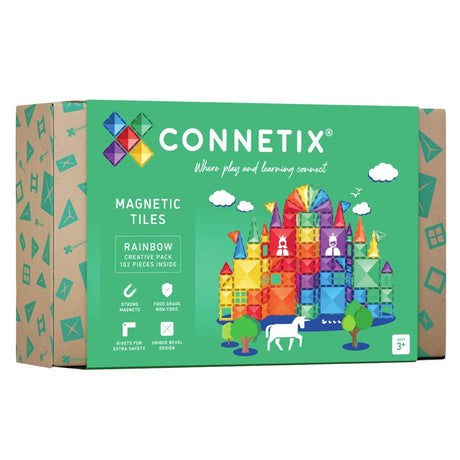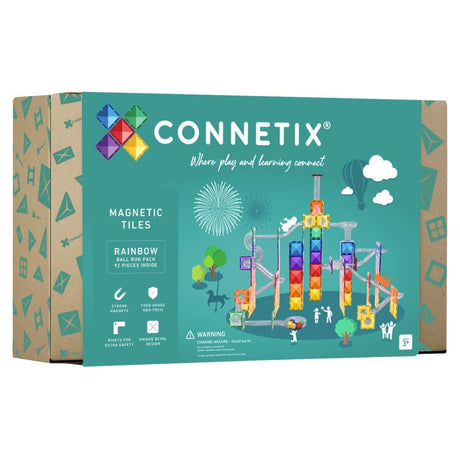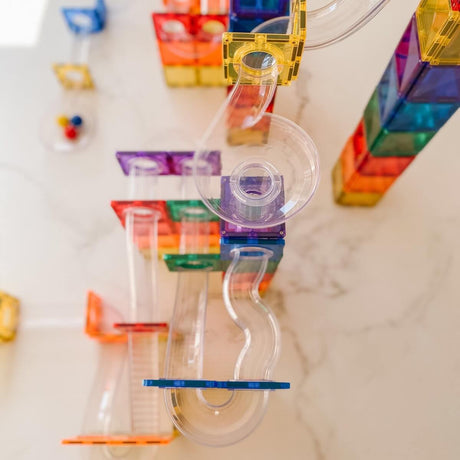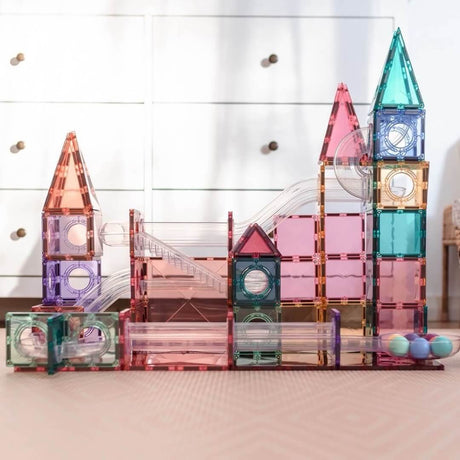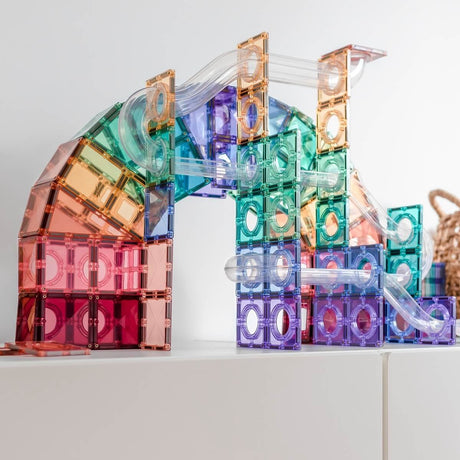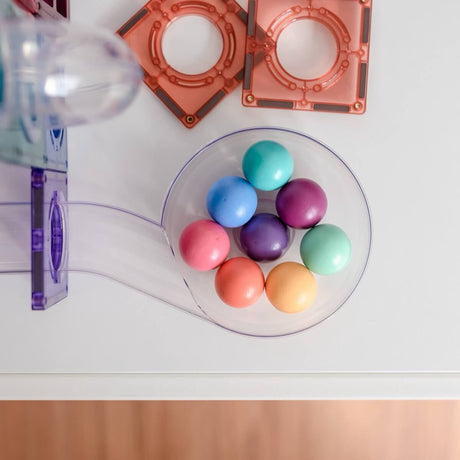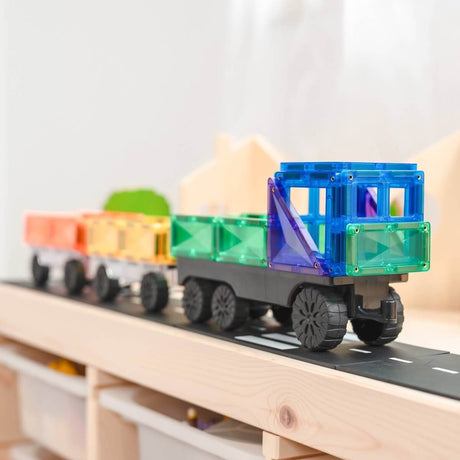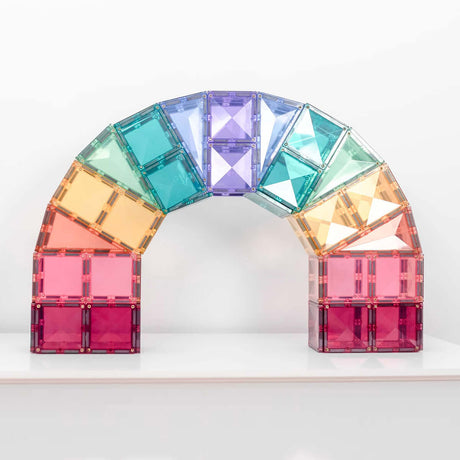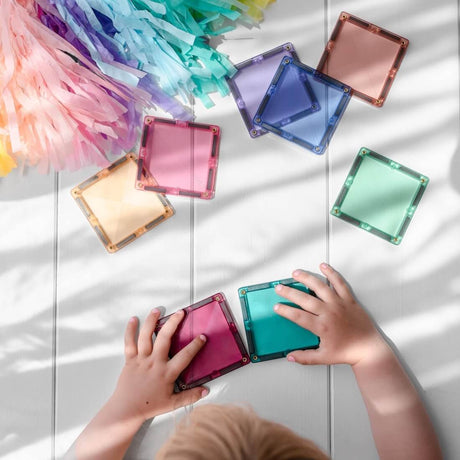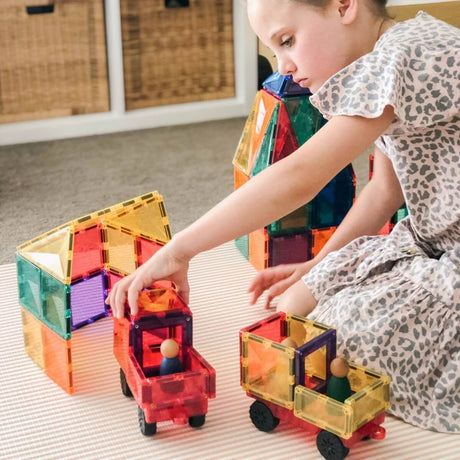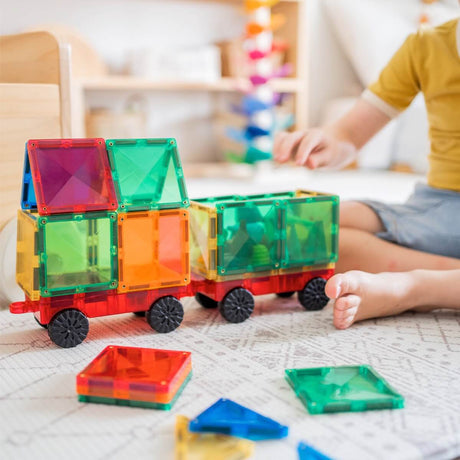Here you are, very little, playing with your little wooden farm.
Too old to put animal figurines in your mouth and chew them; too young to create a complex miniature world, to give them a personality and involve them in telling a story.
You are in the age of experimentation, trial and error. You discover the properties and potential of materials and objects.
Where is this pig going? Will he enter the stable? Will he sneak into the henhouse? What if I turned it on its side?
In a way, a wooden animal isn't that different from a Lego brick. Above and beside; inside, together and separately…
Understanding the position of objects in space and their relationships to each other is a fundamental skill. Clockwise, or counterclockwise, left, right, upside down and right side up.
Match, rotate, predict if a shape will fit together. This is spatial reasoning, a key skill that toddlers will need to master.
Spatial reasoning is the ability to visualize and understand the relationship between objects in space. It is a fundamental element of STEM disciplines and visual arts.
How can good spatial reasoning help?
Let's pretend you're a toddler again. This time you play with a shape sorter.
Here is a square and here is an opening. Does it fit?
At 12 months old, you pushed the shape into the hole. When it wouldn't fit, you tried several times. With a sudden movement, you dropped the coin onto the sorter.
Most of the time she didn't come in. But sometimes, yes . You weren’t sure why, so you tried again.
Eventually, you realized that you needed to rotate the shape to present it the right way.
Again, at first you didn't know what rotation would work, but you knew something would work. So you kept trying.
Gradually, over the course of attempts, you began to recognize a trend, a pattern : the edges of the hole and the shape had to align.
This was the beginning of spatial reasoning.
You understand that shapes are only suitable if they are oriented correctly. And above all, that there was no need to test the form itself:
You could twist and turn it in your mind. You could determine, by observation, whether it would work.
Will my car fit into this parking space? This tennis racket is too long for the suitcase, but will it fit if I place it diagonally? What will the room look like if I move the couch to the back wall?
Spatial reasoning is a crucial step in cognitive development. It gives children the ability to interpret shapes, dimensions and spatial relationships between objects, which is essential not only for everyday tasks but also for understanding complex mathematical and scientific concepts.
This skill further allows them to visualize various scenarios, leading to problem-solving abilities that play an important role in fields like engineering, architecture, arts, and many others.
Toys to improve spatial reasoning
To develop your child's spatial reasoning skills, consider integrating the following toys into their play time:
- Building Blocks: Offering a variety of shapes and sizes, building sets inspire children to imagine and build structures, improving their ability to manipulate objects in space.
- Puzzles : Puzzles or assembly games improve visualization skills and understanding of how pieces fit and fit together.
- Tangrams: These Chinese puzzles feature seven flat pieces that can be arranged to form different shapes, promoting problem solving and spatial reasoning.
- Origami Sets : The art of paper folding helps children visualize and manipulate paper into different shapes, which improves their spatial reasoning skills.
- Strategy games: Games like chess or checkers require strategic thinking related to the positioning of pieces, thus strengthening spatial reasoning.

Activities to stimulate spatial reasoning
In addition to toys, the following activities can help strengthen your child's spatial reasoning skills:
- Drawing: Whether it's stick figures or complex scenes, drawing requires an understanding of spatial relationships and promotes attention to detail.
- Treasure Hunt: Reading a map to locate hidden “treasure” can significantly improve spatial orientation.
- Active, outdoor play : Activities like climbing and jumping help children judge distances and sizes, improving their understanding of space.
- Building Models and Diagrams: This activity not only stimulates creativity, but also encourages children to visualize and manipulate objects in space.
- Introduce spatial vocabulary: Using terms such as "above", "below", "inside" and "outside" in conversations can help children better express and understand these spatial concepts.
Last word
Spatial reasoning is the cornerstone of various academic and practical skills. By integrating the right toys and activities into your child's play time, you can ensure that they develop strong spatial reasoning skills, equipping them with a set of skills that will serve them well in their future academic and professional activities.
Remember, developing spatial reasoning is not a chore – it is a journey of exploration and fun!












